MARIANI’S
December
2, 2007
NEWSLETTER
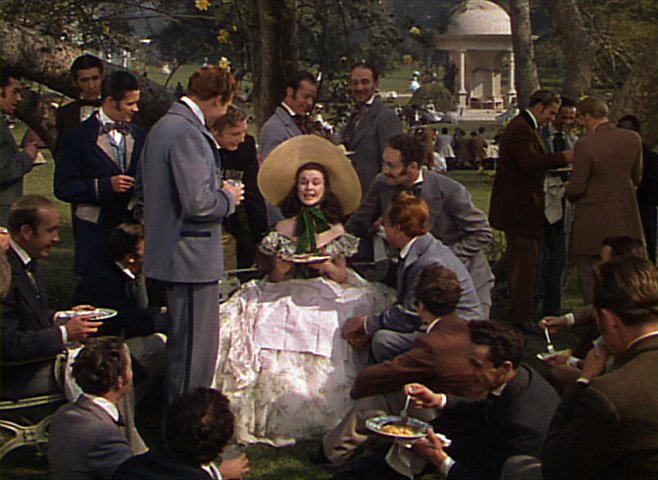
Vivien Leigh as Scarlett O'Hara in "Gone with the Wind" (1939)
NEW! Click esquire.com
to go to my new biweekly column at Esquire
Magazine.
ARCHIVE: Readers may now access
an
Archive of all past newsletters--each annotated--dating back to July,
2003, by simply clicking on www.johnmariani.com/archive
SUBSCRIBE AND
UN-SUBSCRIBE: You may subscribe anyone you wish
to this newsletter--free of charge--by
clicking here.
In
This Issue
NEW YORK CORNER: Lucy of Gramercy by John Mariani
NOTES FROM THE WINE CELLAR: New Book Shows Winemaking is Serious Business,
Not Romance, a Review by John Mariani
WHAT'S NEW IS OLD IN DUBLIN. . .
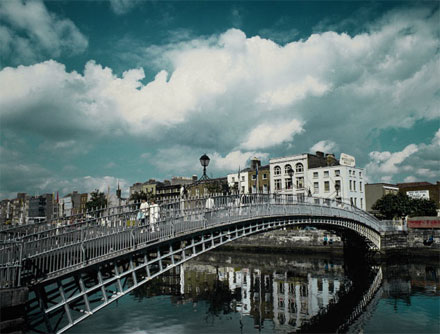
AND A WEE VISIT TO CORK
by Robert Mariani
A great way to soak up some of this literary atmosphere is to join
 In keeping with
In keeping with I spent my first night in
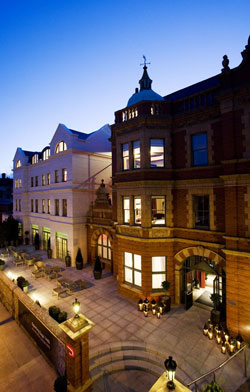 From the outside, The Dylan looks much
like the other homes on the street. Well-kept and reserved. Inside,
there is a distinctively chic re-design with Still,
the sleek silver and white
bar/restaurant and street-front garden on the ground floor. The Dylan
Bar in
the basement is a dark, moody place with a pewter bar, and barstools
that look
like something Queen Victoria would design if she were feeling a bit
naughty,
and cushy red chairs that seem to be from two or three different eras
at once.
From the outside, The Dylan looks much
like the other homes on the street. Well-kept and reserved. Inside,
there is a distinctively chic re-design with Still,
the sleek silver and white
bar/restaurant and street-front garden on the ground floor. The Dylan
Bar in
the basement is a dark, moody place with a pewter bar, and barstools
that look
like something Queen Victoria would design if she were feeling a bit
naughty,
and cushy red chairs that seem to be from two or three different eras
at once.The guest rooms are all different but done in the same vein of textured
Room rates are US$200-US$400.
The Dylan Hotel
My first meal in
Chapter One's list of starters that night included Jerusalem artichoke soup with leeks and hazelnut cream; langoustine with smoked bacon and a red pepper basquaise purée; and duck sausage with a rich cassoulet of lentils, apple and horseradish purée. I was delighted with a flavorful terrine of veal topped with pear and mustard
 The entrees were also nicely balanced
in taste and textures, with everything here based on Irish ingredients
from the seas and
farms. Thus,
there is hake with braised squid, roast fennel, tomato and shellfish
sauce; an Aberdeen Angus fillet of beef
with braised mushrooms, red wine essence
and a béarnaise sauce; and a loin
of venison with
creamed savoy cabbage, roast organic beets, stuffed white onion, and
pickled
walnut vinaigrette.
The entrees were also nicely balanced
in taste and textures, with everything here based on Irish ingredients
from the seas and
farms. Thus,
there is hake with braised squid, roast fennel, tomato and shellfish
sauce; an Aberdeen Angus fillet of beef
with braised mushrooms, red wine essence
and a béarnaise sauce; and a loin
of venison with
creamed savoy cabbage, roast organic beets, stuffed white onion, and
pickled
walnut vinaigrette.I chose an exquisitely composed guinea hen, delicately wrapped in a mild Parma ham and modified by a garlic emulsion and peas à la
Desserts, too, were a simple but eloquent statement of flavors that fit together like a well-crafted sentence--a soft glazed pear worked perfectly with a sesame tuile and pear cream accompanied by a small helping of licorice ice cream and a palmier bisquit.
Chapter One has an exceptionally good winelist, with a mostly French selection but with plenty of New World bottlings too from South Africa, New Zealand, the U.S. and elsewhere.
Chapter One is open Tues.-Sat. for lunch and dinner, Prices for appetizers run 10-22 euros, entrees 34-37.50 euros, with a pre-theater dinner at 35 euros.
During my visit to Dublin this time, I was invited to drive up to the Jameson Whiskey distillery in County Cork for the introduction of their newest "old whiskey," Jameson "Rarest Vintage Reserve."
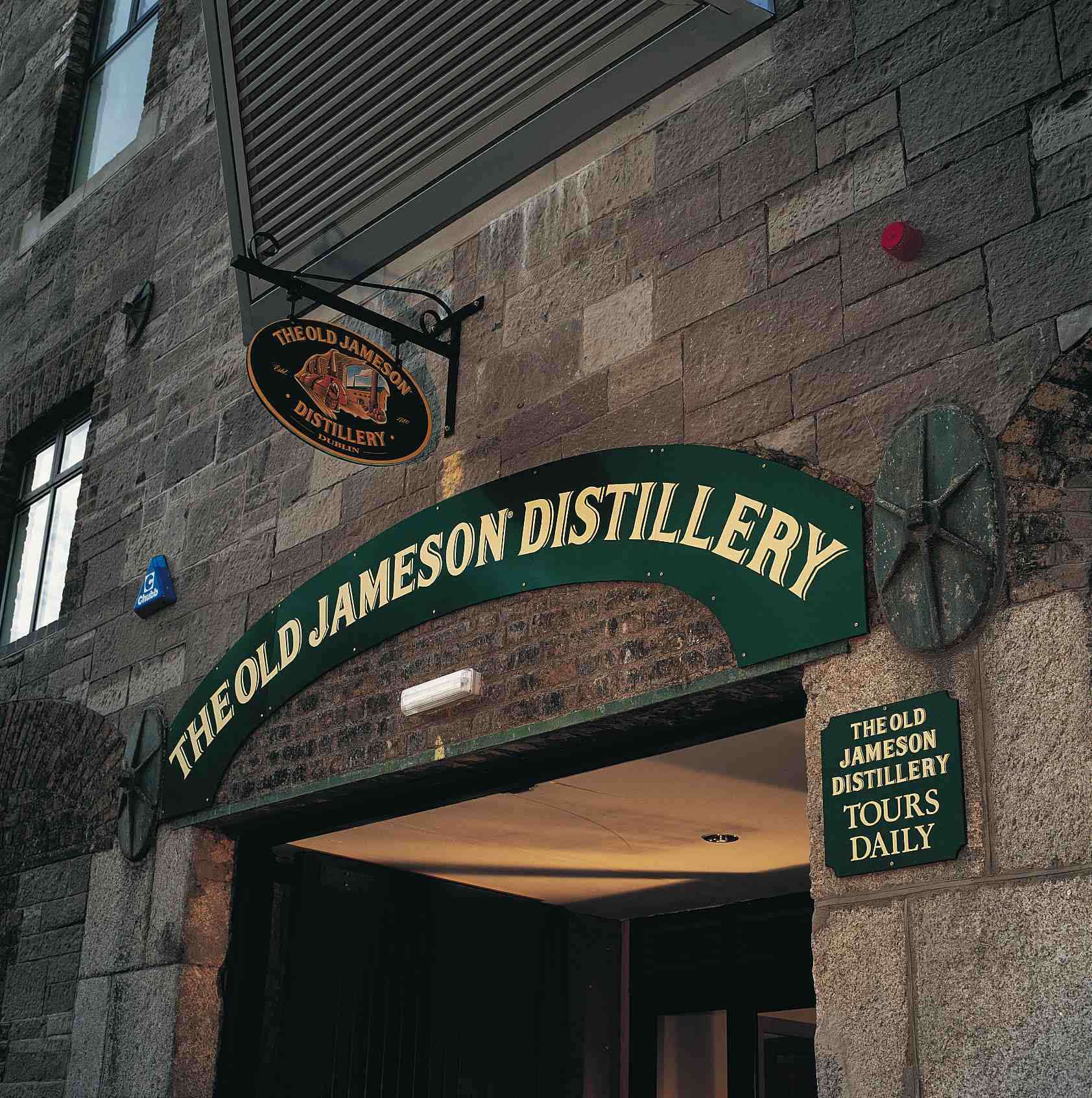 The
trip itself from
The
trip itself from The Distillery may be visited. (Go to: www.jamesonwhiskey.com). Here you'll get a good history of distillation, see the giant waterwheel that once powered all of the distillery machinery and today still turns the cogs and wheels in the
 I must admit I found some of the verbal
descriptions of this Rarest Vintage a bit effusive and consequently
somewhat
vague. Terms like "ripe fruit notes
of melon and dark fleshy plums" and "toasted wood with a touch of creamy fudge" are all very poetic, but
everyone's taste buds are different. And
besides, I find it more enjoyable simply to savor the complexity of a
spirit this nuanced without having to name
each note as it's struck.
I must admit I found some of the verbal
descriptions of this Rarest Vintage a bit effusive and consequently
somewhat
vague. Terms like "ripe fruit notes
of melon and dark fleshy plums" and "toasted wood with a touch of creamy fudge" are all very poetic, but
everyone's taste buds are different. And
besides, I find it more enjoyable simply to savor the complexity of a
spirit this nuanced without having to name
each note as it's struck.That said, Jameson's Rarest Vintage Reserve is definitely among the most interesting and satisfying whiskeys I've ever tasted. There's a little something new in every sip, from start to finish. One of the main characteristics of Irish whiskey that distinguishes it from Scotch blends and single malts in general, is the absence of the smoky, peat flavor, which some Scotch connoisseurs prize but others find overwhelming.
In the long tradition of Irish whiskey-making, Jameson air-dries its barley as opposed to spreading it over peat smoke to keep the flavor pure.
This year Jameson unveiled its "Rarest Vintage Reserve" in a special
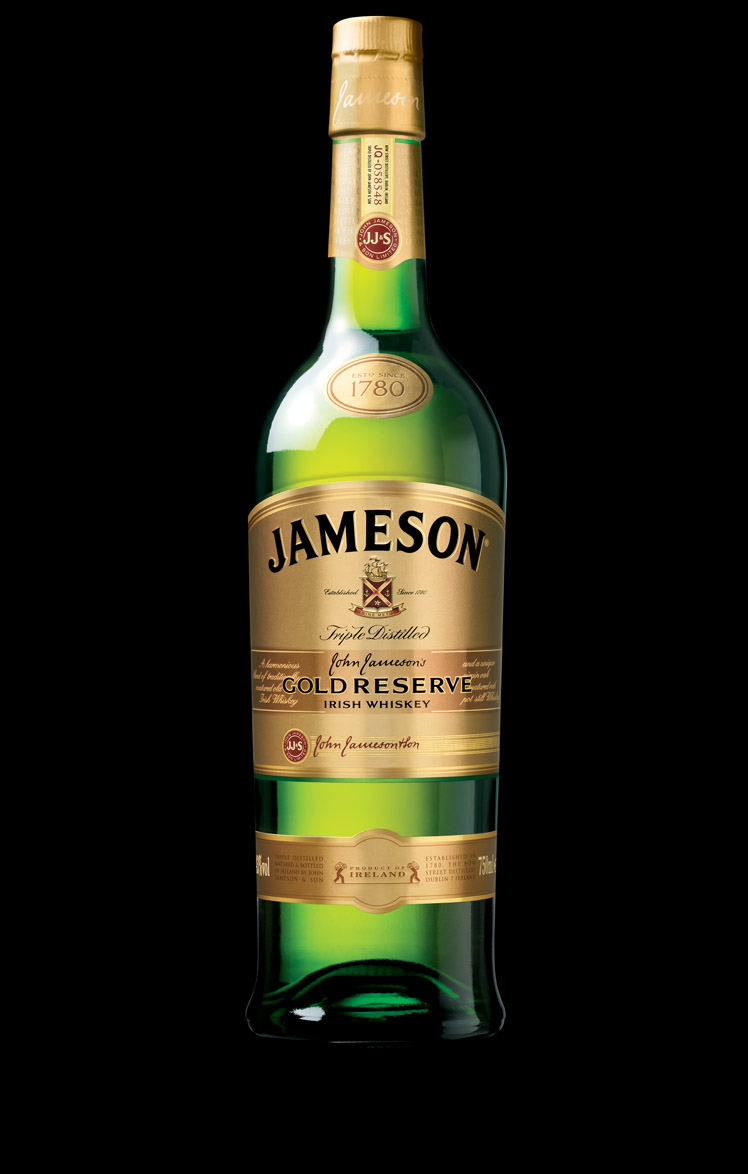
O'Connor came on stage looking and sounding uncharacteristically
Bottles of the new Rarest Vintage Reserve were at all the tables and
I found
 While
attending the Jameson Rarest Vintage
Reserve unveiling ceremony, I was
staying overnight at the luxurious new hotel, Capella Castlemartyr
(353 0-21 464-4050)
in
While
attending the Jameson Rarest Vintage
Reserve unveiling ceremony, I was
staying overnight at the luxurious new hotel, Capella Castlemartyr
(353 0-21 464-4050)
in The Capella's rooms are spacious and beautifully appointed and there is an Auriga Spa and a large indoor pool. Guests can also enjoy carriage ride tours of the meticulously kept grounds. In season there is easy-access deep sea fishing just outside of the
But a visit to just about anywhere in
NEW YORK CORNER
by John Mariani

35 East 18th Street/ near Park Avenue South
212-475-5829
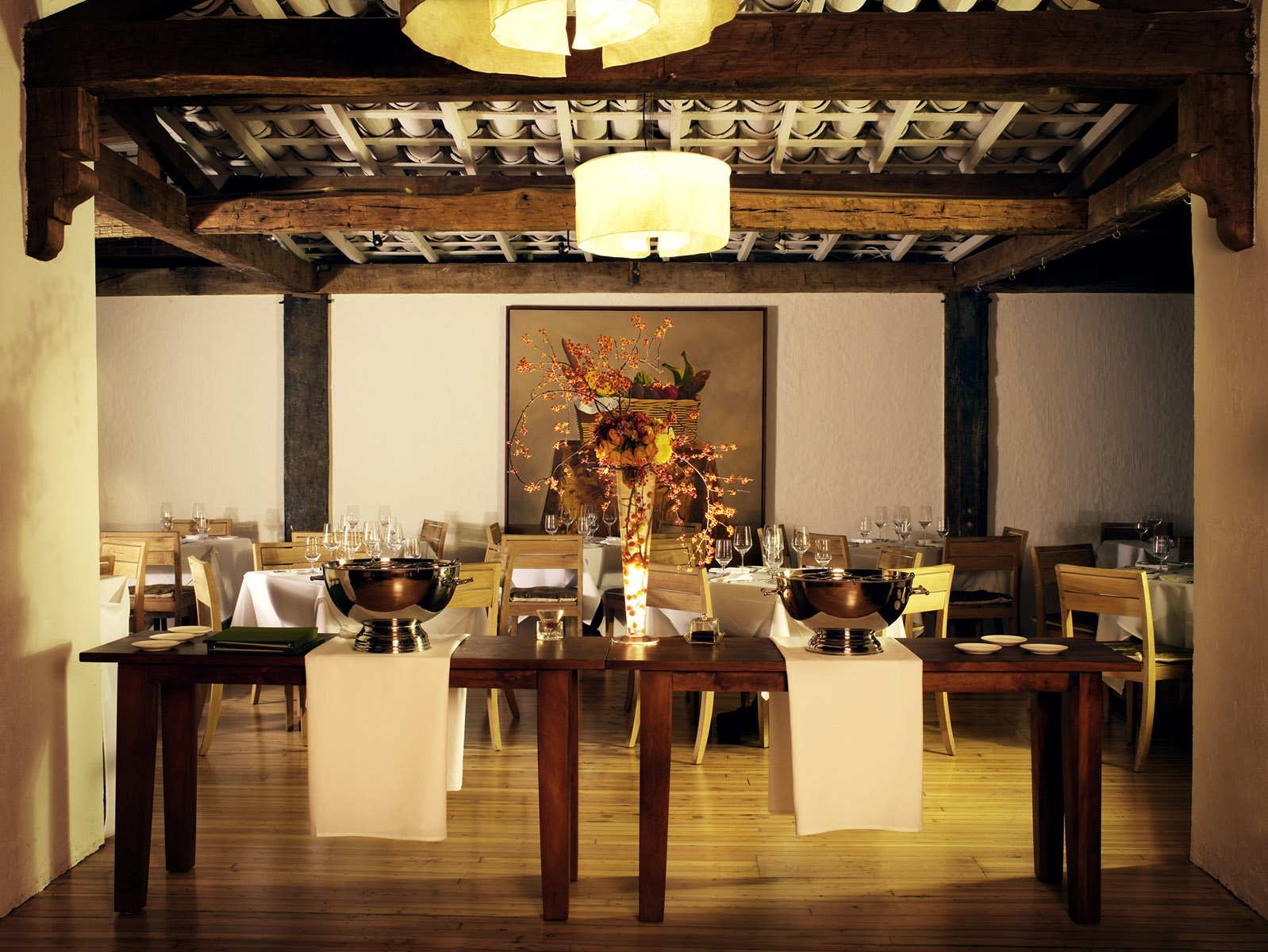 I'm hoping--begging, really--that
owner Phil
Suarez will soon change the name of Lucy of Gramercy to Carmen of
Gramercy, because the unique and brilliant chef Carmen Gonzalez
deserves it. The reason for the current name is because the aforesaid
Lucy is Suarez's wife, which is lovely. But give credit where
credit is due.
I'm hoping--begging, really--that
owner Phil
Suarez will soon change the name of Lucy of Gramercy to Carmen of
Gramercy, because the unique and brilliant chef Carmen Gonzalez
deserves it. The reason for the current name is because the aforesaid
Lucy is Suarez's wife, which is lovely. But give credit where
credit is due.I have known Carmen since she opened her namesake restaurant in Coral Gables, Florida, four years ago, and I knew from my first meal that she was immediately the finest chef in the Miami area, unique in that she was taking the cooking of her native Puerto Rico and sublimating it to haute cuisine, with all the dash, color, and bright flavors of the Isla Encantada and all the modernity and precision of a 21st century chef. The restaurant, Carmen, was one of my picks for Esquire's
Photo: Hayes & Hayes Best New Restaurants of 2003.
Sadly, a fire in the hotel that housed Carmen destroyed the restaurant last year, and Coral Gables' loss is New York's gain. Ms. Gonzalez is a fireball, sweet but intense, serious but adventuresome, and what Michael Psilakis has done to revolutionize Greek food in America at Anthos, Carmen (below) has done for Puerto Rican food here. Only a handful of restaurants in San Juan do food of this style, and Carmen does it better than any of them.
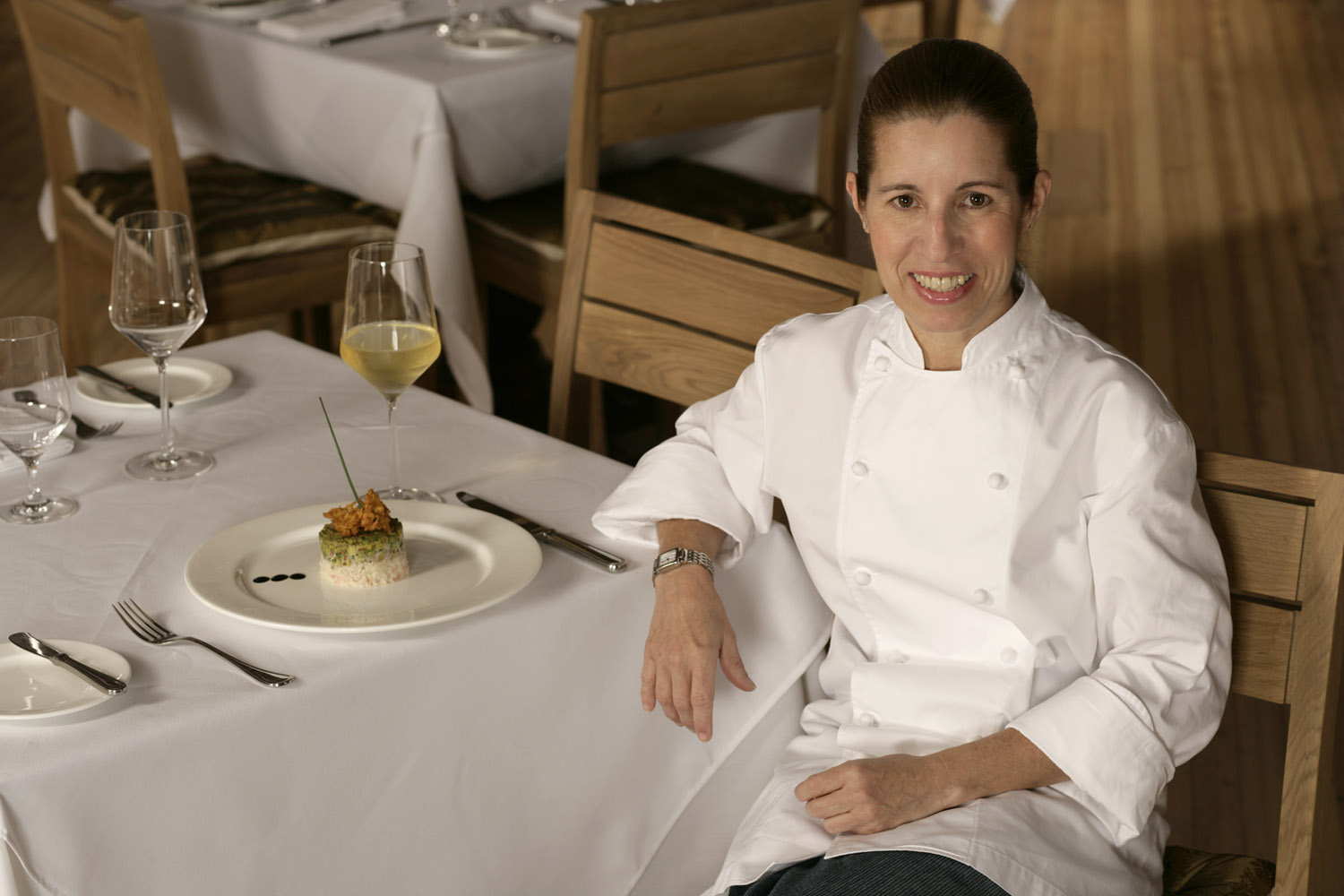
The space itself, which has seemed jinxed after so many restaurants opened and closed here, is now very inviting, the lighting warmer, the tables both spacious and well-spaced, with good napery and glassware, and the touches of old beams and some splendid large food paintings seem evocatively removed from Manhattan. Excellent modern Latin music plays softly in the background.
You begin here with picadera, Puerto Rican street food, fritters of cod, manchego cheese, and other options; grated yuca and chicken with pique salsa; creamy potatoes stuffed with sirloin piqadillo; and crispy little bites of fried pork with plenty of garlic with a lemon juice relish. The grated green plantains are addictive too.
Photo: Claudia Goetzelman
"First Plates" are beautifully thought out appetizers (although you could almost make a meal of the picaderas), like seared yellowfin tuna with malanga mash and a remarkably inventive coconut gastrique; Fat Key West shrimp come with plantain piñon and a sweet-tangy sofrito of sautéed ham, garlic, and peppers (below), and a beautiful and creamy lobster and avocado terrine is laced with a lime mayonnaise and little plantain patties called arañitas.
Main Plates are carefully composed to incorporate Puerto Rican ideas and richness, but I never find Carmen's food cloying or heavy, as I often have with other Latino chefs who just pile on the carbs and the sweetness. Thus, lightly cooked black grouper is drizzled with a sour orange gastrique and sided with smoked calabaza risotto--terrific concept. Chilean sea bass (not usually my favorite fish) is creamy and sweet, bobbing in a corn broth with fingerling potato croquettes, while a three-inch thick Berkshire pork chop is cooked just to the pink, accompanied by sweet plantains, goat's cheese piñon, and a reduction of pork juices. I'm not sure Carmen needs wagyu beef to ensure her slowly braised shortribs with funche (a kind of polenta) and Island mojito have such depth of flavor, but the beef flavor comes
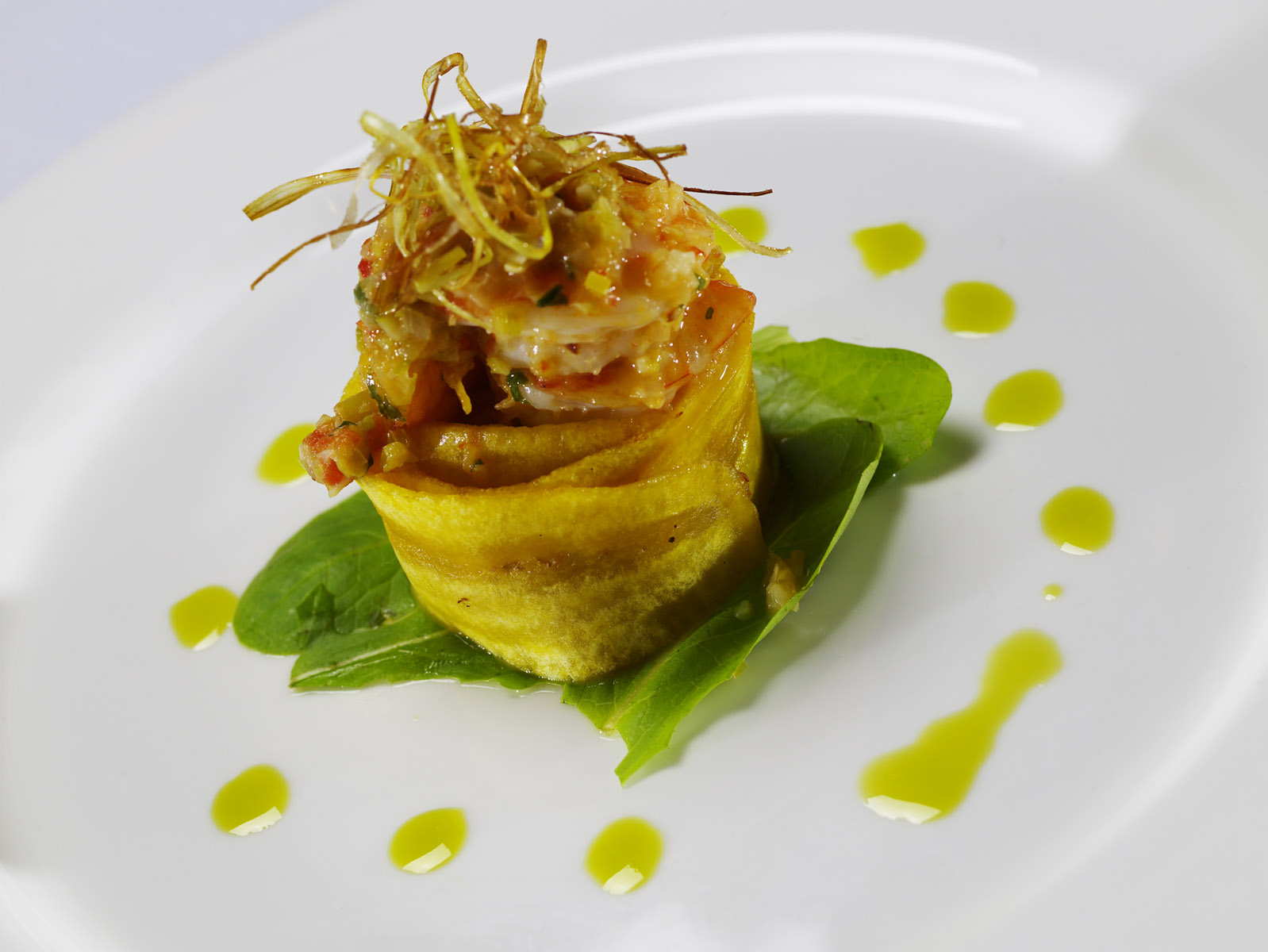 through forcefully
as well. On the side, the arroz
con gandules (rice with pigeon peas) and the plantain fufu porridge (originally an
African dish) will bring a smile to anyone who's eaten the comfort food
of Puerto Rico outside of the main drag of touristy Condado.
through forcefully
as well. On the side, the arroz
con gandules (rice with pigeon peas) and the plantain fufu porridge (originally an
African dish) will bring a smile to anyone who's eaten the comfort food
of Puerto Rico outside of the main drag of touristy Condado.Carmen doesn't let up with desserts: They are as imaginative and lovable as the rest of the menu, from a perfectly creamy flan with caramel sauce and warm coconut rice pudding tamal with cajeta cheese sauce to a sour orange mango strudel with white cheese sorbet and fruit salad and an oozy chocolate cake with chocolate sorbet and devastatingly rich dulce de leche foam.
The winelist at Lucy is very well thought out to stress Spanish and South American bottlings, from revelations like Viña Jaraba Crianza 2003 to Viñedos de los Vientos "Angel's Cuvee" 2005 (a ripasso style of the Photo: Hayes & Hayes tannat grape), all compiled by new sommelier Gary Dusek.
If you can find Latino food like this anywhere in or out of New York at this high level of balanced flavor and textures, let me know. There have been several attempts in the past, some tasty, some hearty, some just plain fun. But Carmen brings it all into sharp focus, not only as an expression of what is possible within the Latino genre but what is a very personalized vision of a great chef.
Lucy of Gramercy is open nightly for dinner. Picadera run $5.50-$10, appetizers $9-$17, and main courses $24-$32.
by John Mariani
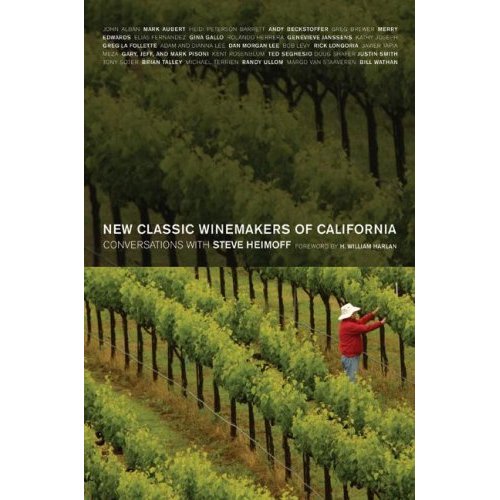 Put
off by the oxymoronic title of Steve
Heimoff’s new book, New Classic Winemakers
of California (
Put
off by the oxymoronic title of Steve
Heimoff’s new book, New Classic Winemakers
of California (Debates rage within the industry about high alcohol levels, pricing, the global market, promotion, public relations, and selling. As Heimoff, west coast editor of Wine Enthusiast Magazine, warns that after the success of
This, then, is not a book about salmon roasts at twilight in the vineyards or lavish charity auctions held under white tents on green lawns. The winemakers in this book are farmers first, and marketers second, and they worry about soil, climate, rot, fungus, and the same things tomato and apple farmers lose sleep over. “I’m not favorable to watering down Pinot Noir,” says Bill Wathen of Foxen Winery & Vineyard, “it’s something I hate to do. But [in] winemaking, you do what you have to do.”
Heimoff tries to steer clear of too much technical jargon—-bâttonage, cap management, heat summation, reverse osmosis, and so on (there is a good glossary at the end, however)--but these are really the tools of the trade, and there are enlightening passages about the reasons a winemaker like Dan Morgan Lee of Morgan Winery uses “a good chunk of Dijon [clones] 115, 667, 777” along with Wadenswil 2A, clone 12, clone 23, and Pommard. Such discussions dispel the myths of gentleman farmers in
If such topics do not seem engaging to the average winedrinker, I believe it is requisite to understand how even the mavericks in the California wine industry are not dreamers but hardworking, dedicated farmer-scientists who must also operate under the directives of owners and corporations.
When winegrower Andy Beckstoffer lost most of his Napa Valley vineyards and couldn’t pay his debts, the giant firm Heublein bought them back. “I personally guaranteed everything,” he said, “They had the right to the house, my car, my wedding ring. . . and they made me sign a personal servitude contract that said I’d farm for them as long as they wanted, I would do everything they told me to do.”
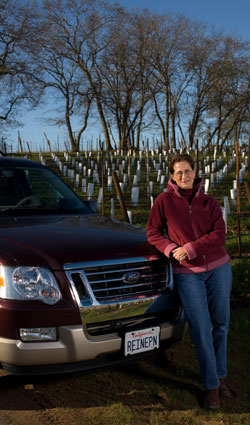
Heimoff also exposes how difficult it was early on for women to enter the industry. When Merry Edwards (right), now with her own Merry Edwards Wines, interviewed with the late Jack Davies of Schramsberg Vineyards, he “practically lost his teeth when I walked in,” and told her he never would have interviewed her if he’d known she was a woman. (She’d put her formal first name, Meredith, on her résumé.) Edwards was finally hired by
There are also anecdotes about how wineries fool the wine media once they know the critic’s predilections. When, for instance, wine writer Robert M. Parker, Jr., who dislikes filtration of wines, visits, winemakers hide their filters out of sight.
Still, while the book clearly proves winemaking to be an agricultural endeavor backed by hard-nosed marketing decisions and buoyed by outrageously expensive, glamorous cult wines, every one of the winemakers included here exudes a passion for what he or she does that strikes me as somewhat different from the pronouncements of garlic or potato farmers. As Gina Gallo of the huge Gallo Family Vineyards tells Heimoff, ”I sometimes think that being able to touch more people with your family wines is a greater value than making the most iconic wine that only three people in the world can have.”

In
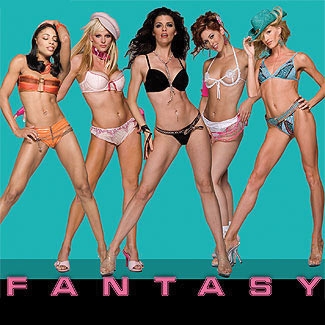
BREAST OR THIGH?
“Having
worked on the Strip six to seven nights a week and every holiday since
I was
17, my most important Thanksgiving tradition is to eat very early. . .
I wear a
G-string at night! There’s always room
for leftovers after the show.”—Stephanie Jordan, dancer at Fantasy
topless show at
QUICK BYTES
* Sun. thru Thurs. in December the two Mercadito locations (179 Avenue B; (212-529-6490), and
* On
* From Dec. 7-22 in
Everett Potter's Travel Report:
Tennis Resorts Online: A Critical Guide to the World's Best Tennis Resorts and Tennis Camps, published by ROGER COX, who has spent more than two decades writing about tennis travel, including a 17-year stretch for Tennis magazine. He has also written for Arthur Frommer's Budget Travel, New York Magazine, Travel & Leisure, Esquire, Money, USTA Magazine, Men's Journal, and The Robb Report. He has authored two books-The World's Best Tennis Vacations (Stephen Greene Press/Viking Penguin, 1990) and The Best Places to Stay in the Rockies (Houghton Mifflin, 1992 & 1994), and the Melbourne (Australia) chapter to the Wall Street Journal Business Guide to Cities of the Pacific Rim (Fodor's Travel Guides, 1991). Click on the logo below to go to the site.
~~~~~~~~~~~~~~~~~~~~~~~~~~~~~~~~~~~~~~~~~~~~~~~~~~~~~~~~~~~~~~~~~~~~~~~~~
MARIANI'S VIRTUAL GOURMET NEWSLETTER is published weekly. Editor/Publisher:
John Mariani. Contributing Writers: Robert Mariani, Naomi
Kooker, Kirsten Skogerson, Edward Brivio, Mort
Hochstein, Suzanne Wright. Contributing
Photographers: Galina Stepanoff-Dargery, Bobby Pirillo. Technical
Advisor: Gerry McLoughlin.
Any of John Mariani's books below
may be ordered from amazon.com by clicking on the cover image.
 My
newest book, written with my brother Robert Mariani, is a memoir of our
years growing up in the My
newest book, written with my brother Robert Mariani, is a memoir of our
years growing up in the For those of you who don't think of the Robert and I think you'll enjoy this very personal look at our --John Mariani |
 |
 |
 |
 |
 |
 |
copyright John Mariani 2007

